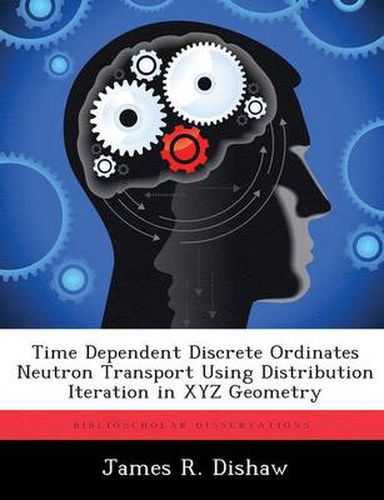Readings Newsletter
Become a Readings Member to make your shopping experience even easier.
Sign in or sign up for free!
You’re not far away from qualifying for FREE standard shipping within Australia
You’ve qualified for FREE standard shipping within Australia
The cart is loading…






This title is printed to order. This book may have been self-published. If so, we cannot guarantee the quality of the content. In the main most books will have gone through the editing process however some may not. We therefore suggest that you be aware of this before ordering this book. If in doubt check either the author or publisher’s details as we are unable to accept any returns unless they are faulty. Please contact us if you have any questions.
The DI algorithm is an alternative to source iteration that, in our testing, does not require an accelerator. I developed a formal verification plan and executed it to verify the results produced by my code that implemented DI with the above features. A new, matrix albedo, boundary condition treatment was developed and implemented so that infinite-medium benchmarks could be included in the verification test suite. The DI algorithm was modified for parallel efficiency and the prior instability of the refinement sweep was corrected. The testing revealed that DI performed as well or faster than source iteration with DSA and that DI continued to work where DSA failed. Performance did degrade when the diamond-difference (without fixup) spatial quadrature was used. Because diamond-difference is a non-positive spatial quadrature, it can produce nonphysical negative fluxes, particularly in higher dimensions. I developed a new fixup scheme to accommodate the negative fluxes, but it did not improve performance in XYZ geometry when the scattering ratio was near unity.
$9.00 standard shipping within Australia
FREE standard shipping within Australia for orders over $100.00
Express & International shipping calculated at checkout
This title is printed to order. This book may have been self-published. If so, we cannot guarantee the quality of the content. In the main most books will have gone through the editing process however some may not. We therefore suggest that you be aware of this before ordering this book. If in doubt check either the author or publisher’s details as we are unable to accept any returns unless they are faulty. Please contact us if you have any questions.
The DI algorithm is an alternative to source iteration that, in our testing, does not require an accelerator. I developed a formal verification plan and executed it to verify the results produced by my code that implemented DI with the above features. A new, matrix albedo, boundary condition treatment was developed and implemented so that infinite-medium benchmarks could be included in the verification test suite. The DI algorithm was modified for parallel efficiency and the prior instability of the refinement sweep was corrected. The testing revealed that DI performed as well or faster than source iteration with DSA and that DI continued to work where DSA failed. Performance did degrade when the diamond-difference (without fixup) spatial quadrature was used. Because diamond-difference is a non-positive spatial quadrature, it can produce nonphysical negative fluxes, particularly in higher dimensions. I developed a new fixup scheme to accommodate the negative fluxes, but it did not improve performance in XYZ geometry when the scattering ratio was near unity.